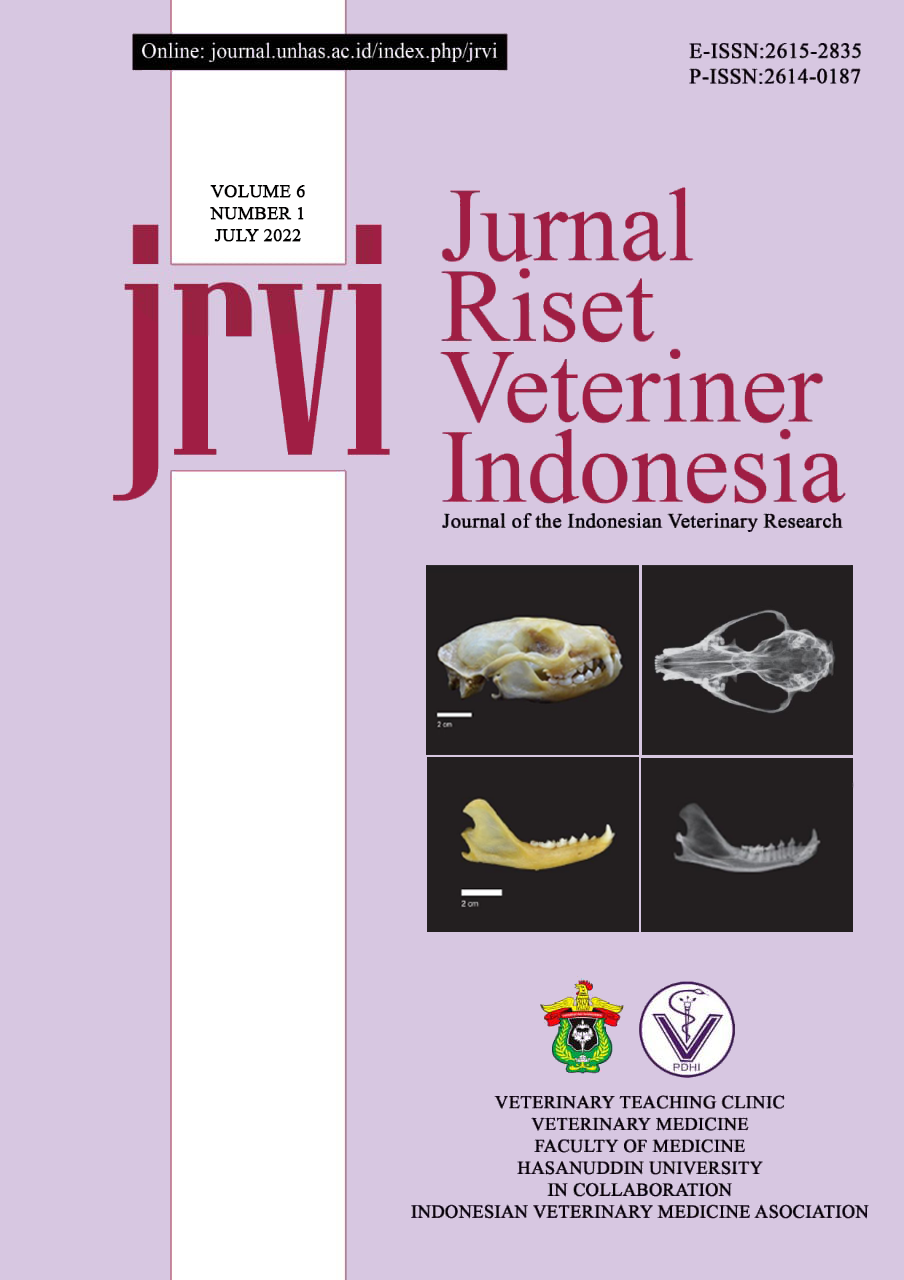Abstract
Aspiculuris tetraptera is one of helminth parasite commonly found in mice. The response of the mice to parasite infection varies depending on various factors. Immune system is one of the factors that affect the occurrence of parasite infection in the host. The purpose of this study were to observe the parasitemia level and the immune respons of mice that infected with Aspiculuris before and after challenge infection. Mice were infected with Aspiculuris twice to see the development of parasite and the immune respon. Feces and blood samples were collected from the mice. Feces samples were examined by floating method to find the parasite egg, whereas blood samples were examined by blood smears to count the differential leukocytes. The result showed that Aspiculuris tetraptera eggs appear in the feces on the 20th day after infected as many 200 eggs/gram and increased on the 26th day as much 300 eggs/gram of feces. The peaks of eosinophils were on the 3rd and 6th days at 2.8% and 3.1% respectively. The level of Neutrophils and monocytes showed fluctuations but the trend decrease from day to day. Lymphocyte levels also showed fluctuations but tended to increase from the first day to the 26th day.

This work is licensed under a Creative Commons Attribution-NonCommercial 4.0 International License.

